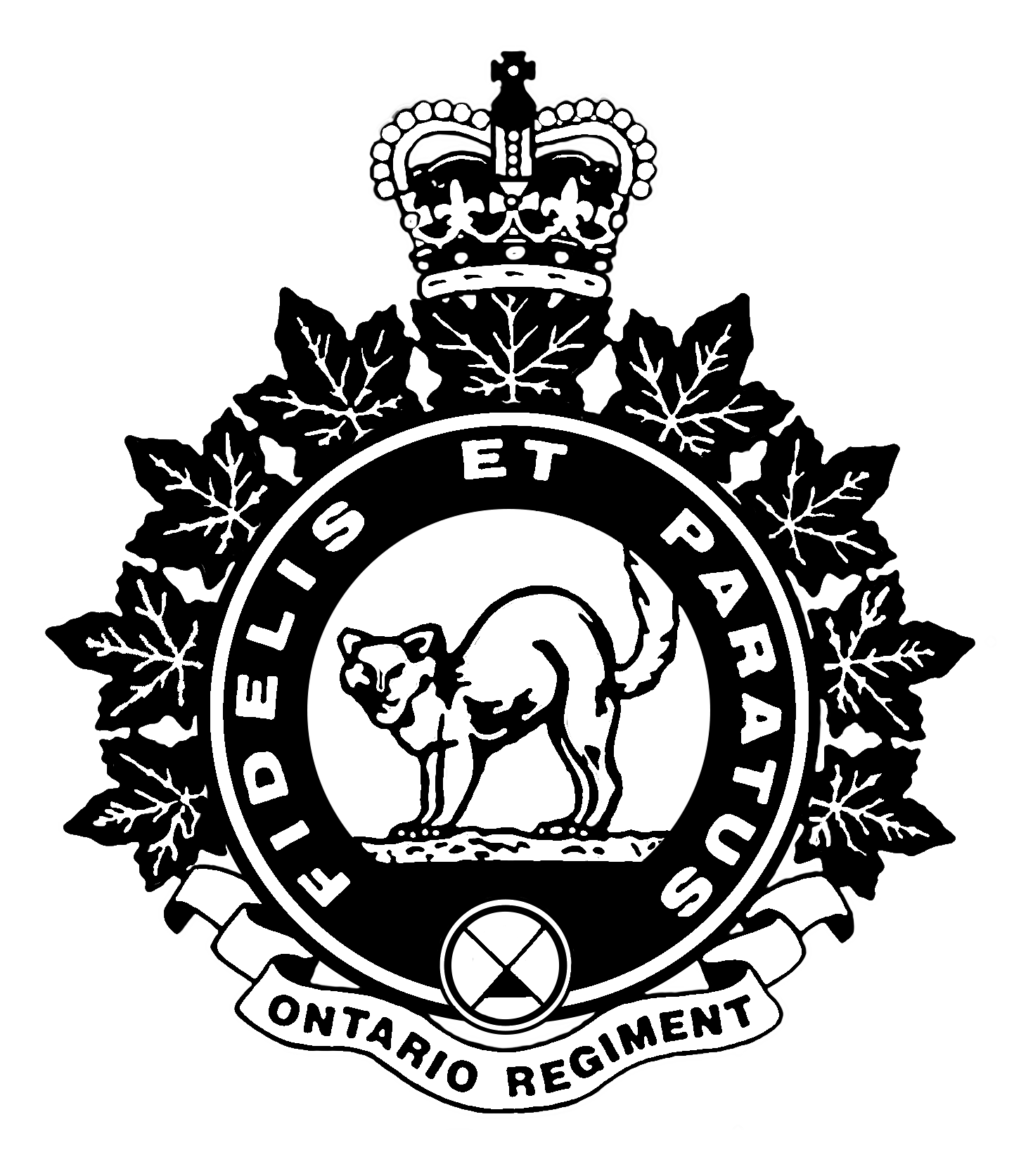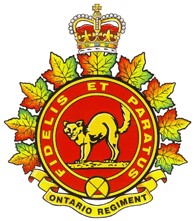The Ontario Regiment Comes Home in November 1945: Part 2 – The Welcome Ceremony
In the previous article, the Ontarios had almost completed their journey home and their process of demobilization. Since 5 October they had travelled through the Netherlands and Belgium, waited for over a month in England, took a five-day crossing of the Atlantic and finally, a two-day train ride from Halifax and arrived in Oshawa on 29 November.
Downtown Oshawa was quiet in the late morning as all stores had closed as of 10:00 am in anticipation of the return of the Ontario Regiment, but by 2:30 pm the area was buzzing with excitement. The crowd began gathering at Memorial Park in downtown Oshawa as early as 1:00 pm and were entertained by the Military District #2 Band and the Ontario Regiment Brass Band. Outside the park car horns could be heard, there was shouting, cheering and singing.

A Regimental Colour Party of the Regiment’s returned veterans had retrieved the Regimental Colours from St. George’s Anglican Church, passed through the park and then marched down to the train station with the Regimental band. Aircraft from the Oshawa Flying Club circled overhead in downtown Oshawa and numerous dignitaries assembled on the McLaughlin bandshell stage. The day was cold and overcast with a light snowfall on the ground, but the weather could not subdue the mood of the day. Everyone eagerly awaited the arrival of the Ontarios. A special area was set aside for the families, grouped by surname, so each soldier could quickly find his family. For many, they would be reunited for the first time since the Regiment went overseas in 1941.
Despite being asked not to assemble at the train station, about 3000 people appeared anyway. There was brief confusion as the Regiment disembarked from the train. The previously returned veterans tried to meet up with old friends. Some soldiers recognized family members and rushed to greet them. Lieutenant Colonel C.M. McLean swiftly brought order, and soon the Regiment and the rest of the parade formed up for the march to Memorial Park. The Regimental Colours were turned over to a Colour Party of the active service battalion. Veterans of the active service battalion who had come home in earlier weeks were asked to meet the Regiment at the train station and to march with them. The Ontario Regiment Brass Band led the way and was joined by the General Motors Veterans’ Brass Band.
The paraded stepped off and marched north on Simcoe Street, which was lined with Oshawa’s citizens to welcome its Regiment home. As the Regiment passed each group of spectators, cheers rose to a climax and wives were seen to run into the street to embrace their husband. The spectators poured off the sidewalks and fell in behind the Regiment.

The crowd at Memorial Park was alerted to the imminent arrival of the Ontarios by the noise of those viewing from Simcoe Street. The Ontarios marched into the park as their band played “John Peel”, the Regimental March, and halted in front of the bandshell. A small welcome ceremony took place. The Oshawa Times-Gazette noted that the dignitaries’ speeches were “notable for their brevity as well as their sincerity.”
The Regimental Colours were ceremoniously handed over to the 2nd Battalion. And with that, the Ontario Regiment ended its active status and became a reserve regiment once again. The Colour Party of the reserve battalion marched the Colours back to St. George’s Church where they were re-deposited for safekeeping.
At the final dismissal it was time for everyone to get reacquainted and for the celebration to begin, but there were some important items of administration to take care of first – final pay, travel arrangements and communicating with families who could not make the journey to Oshawa. The Centre Street School was set up to facilitate all of these. Three tables were set up to distribute the final pay. The Rotary Club had arranged for free phone calls anywhere in Canada and an area was devoted to those who wished to send a telegram, also for free. Agents from the Canadian National Railway and Canadian Pacific Railway were on site to convert army-issued travel warrants into train tickets. The newspaper described the school as a highly efficient system.
The crowd began to disperse by the late afternoon. The men who lived at points farther west mostly left on the 4:20 train. The Oshawa Armoury on Simcoe Street was open to all members of the Regiment and the party went on late into the night. The war was truly over, the Regiment was home and everyone could get on with the rest of their lives.

Rod Henderson
Rod Henderson is the Regimental Historian of the Ontario Regiment. He served as a Sergeant in the Regiment and is the author of “Fidelis Et Paratus: The History of The Ontario Regiment RCAC”.


